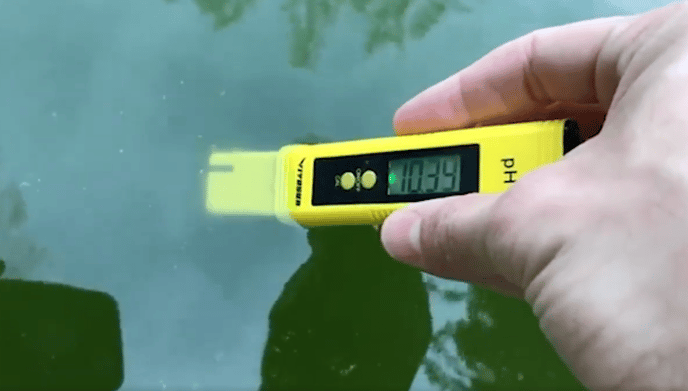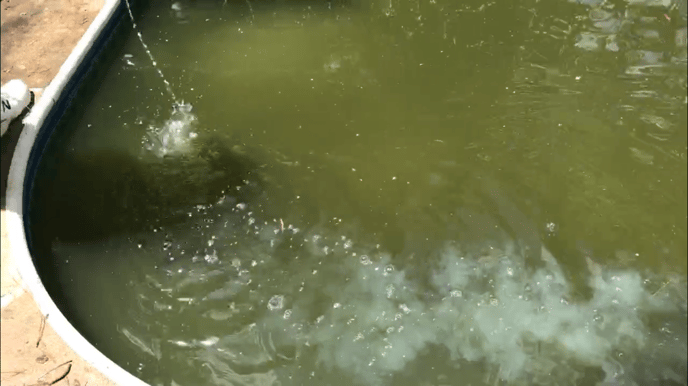How to know if you have phosphates in your pool
Phosphates can be tested for, but test kits have limitations. We have a more reliable method, called the "red cap test"
You can test for phosphates, but most tests will only show orthophosphates. In our opinion, the most reliable way to know if phosphates are in your water is to use a small amount of PR-10,000 and see if it reacts (clouds up in the water). We call this the "red cap test".
Limitations of phosphate testing
Because there are so many different types of phosphates that can be present in pool water, test kits rarely pick up on all of them. Most people have more phosphates in their water than they think. In fact, some people will use PR-10,000 and tested phosphate levels can rise. But how is that possible?
It's because PR-10,000 removed phosphates your test kit did not read. PR-10,000 removes all types of phosphates.

The PR-10,000 cloud is visual proof of phosphates being removed
Fact: if PR-10,000 clouds the water, phosphates are present and are being removed. You're watching the irreversible reaction happen in real-time. The PR-10,000 cloud represents phosphates being pulled out of solution, and that reaction is permanent. In other words, once the cloud happens, you cannot undo it and put those phosphates back in solution.

The cloud from a PR-10,000 red cap test.
PR-10,000 converts those phosphates into a solid (fine white dust) that must be vacuumed out or cleaned out of the filter. End of story.

The precipitate dust needs to be vacuumed to waste, and/or cleaned out of the filter.
How to do the red cap test
The red cap test is exactly what it sounds like. PR-10,000 bottles have a red cap. Add just a capful of PR-10,000 (a tiny amount!) to the pool in one spot. Give it 30 seconds or more, and see if you can see the cloud. If not, that's great! You have little-to-no phosphates in your water.
If the cloud gets larger than the size of a basketball, we believe it's worth treating.
How accurate is the red cap test?
The red cap test is not meant to measure phosphates. It's only there to confirm whether or not phosphates are present. So it's not a test kit type of measurement. It's a foolproof yes-or-no test. So is it accurate for telling you phosphate levels? Not at all. But it is 100% reliable.

Another red cap test after 30 seconds. This pool tested zero phosphates, but the cloud proves there are phosphates in the water. The size of the cloud is larger than a basketball, so we believe it's enough to justify a PR-10,000 treatment.
Green Pools and Algae
Where there are algae, there are phosphates. But in many cases, you could have a totally green pool that tests zero phosphates. That's because the phosphates are within the cell walls of the algae and cannot be tested.
It's no different from the pH being much higher in a green pool because CO2 is within the cell walls of the algae, not in solution. Less dissolved CO2 means a higher pH.

10.39 pH in a green pool?! Yes, because CO2 is consumed by algae.
When algae is killed by chlorine (or an EPA-registered algaecide, neither of which Orenda makes), it releases CO2, nitrates and phosphates back into the water. At that point, PR-10,000 can remove those phosphates.

Seconds after a chlorine shock, PR-10,000 was added during our Green Pool Cleanup procedure. The reaction with phosphates was immediate.
Conclusion
To know if you have phosphates in your water, the most reliable way is to use PR-10,000 and see if it clouds. Other ways to know are if algae are present or by using a phosphate test kit.
Related: Phosphate Removal | Pillar 3